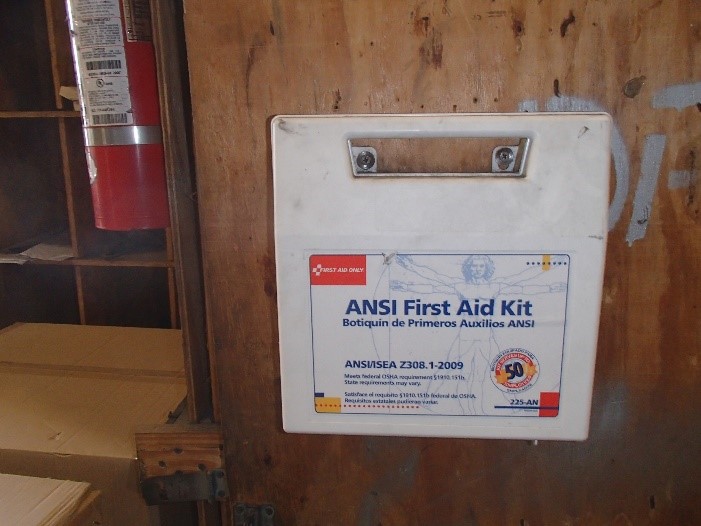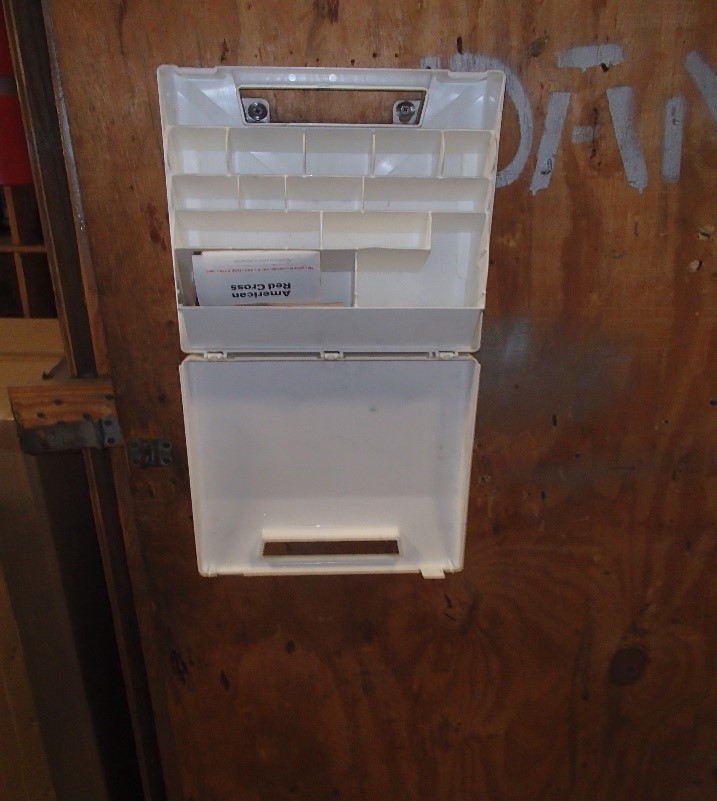What’s Wrong With This Picture?
By: Noel (Mac) McCatty, USF Safety Consultant
It is a requirement of OSHA that employees be given a safe and healthy workplace that is reasonably free of occupational hazards. However, it is unrealistic to expect accidents not to happen. Therefore, employers are required to provide medical and first aid personnel and supplies commensurate with the hazards of the workplace. The details of a workplace medical and first aid program are dependent on the circumstances of each workplace and employer. If additional information is required, a USF Safety & Health Consultant should be contacted.


Hazard(s):
First-aid supplies approved by a consulting physician were not readily accessible.
Applicable Standard:
1910.151(b) In the absence of an infirmary, clinic, or hospital in near proximity to the workplace which is used for the treatment of all injured employees, a person or persons shall be adequately trained to render first aid. Adequate first aid supplies shall be readily available.
Consequences:
Aggravation of injuries, from lack of immediate treatment of first aid injuries. In the case of an emergency, the employees will be delayed in receiving adequate first aid for contamination to the eyes or cuts. This delay could result in permanent damage to the employee’s eyes or cuts from the chemical or foreign object.
Corrective Action:
Contact a first-aid supply service to determine the extent and nature of medical supplies appropriate for the company’s operations. Supplies should not be kept in areas where they would be unavailable in the event of an emergency. Supplies should include a stretcher and blanket for prompt transportation of an injured employee. The first-aid kit(s) should include gauze, bandages, and dressings in individually wrapped and sealed packages since these items should be kept sterile. Other supplies might include adhesive tape, triangular bandages, splints, scissors, and a mild soap. Maintain records of supply usage. Periodic review of these records can highlight operations or procedures which frequently result in first aid injuries.
Before you begin to assess the risks and identify the potential hazards, you must first evaluate your level of expertise. If you are not comfortable with this, it’s perfectly fine to look for a third-party safety consultant or industrial hygienist. Here at the USF Safety Consultation Program https://health.usf.edu/publichealth/cohpe/usfsafetyflorida, we provide both of these services confidentially and for FREE. Select the following link to submit your request https://www.tfaforms.com/4696809.
